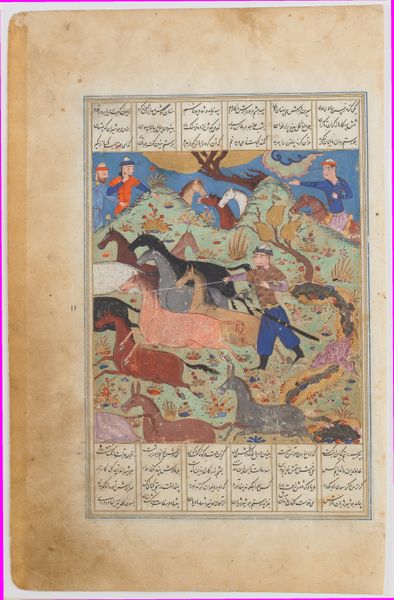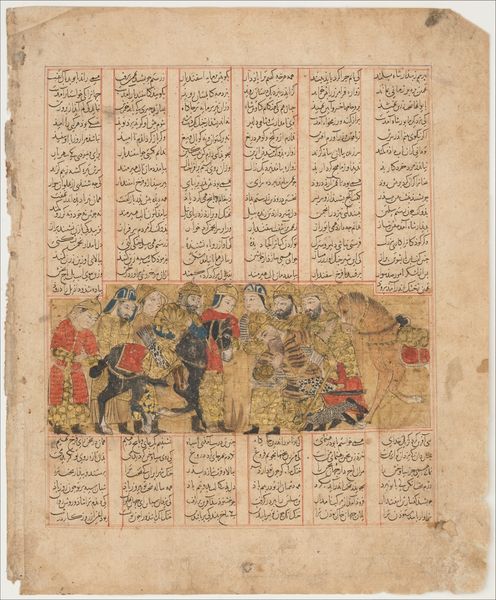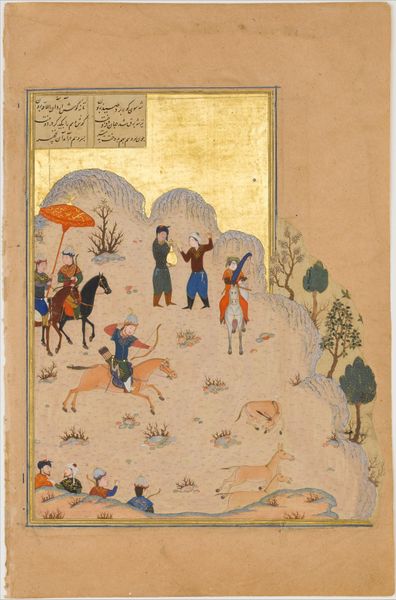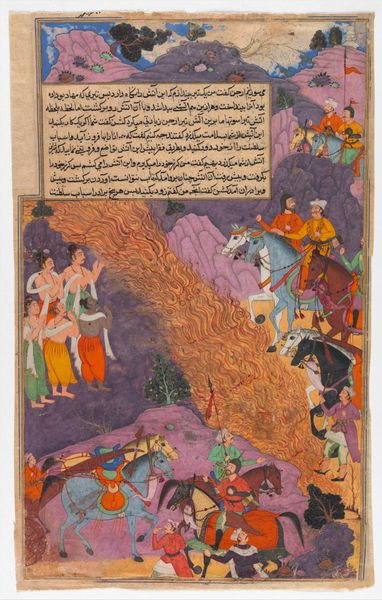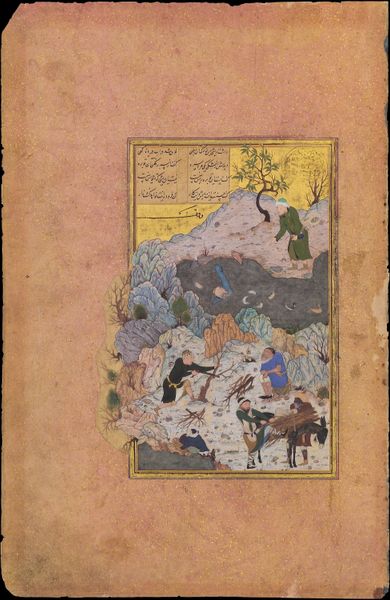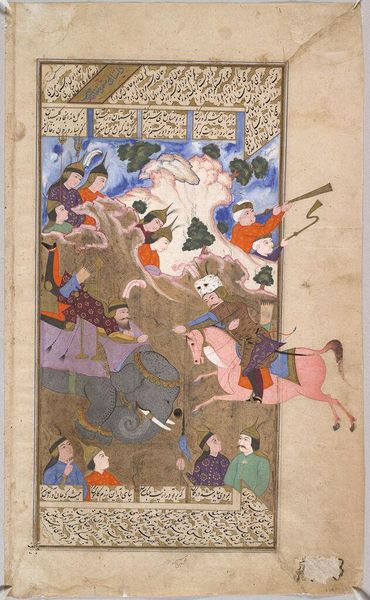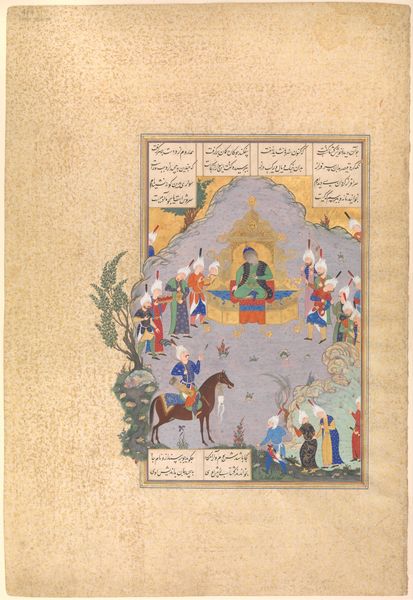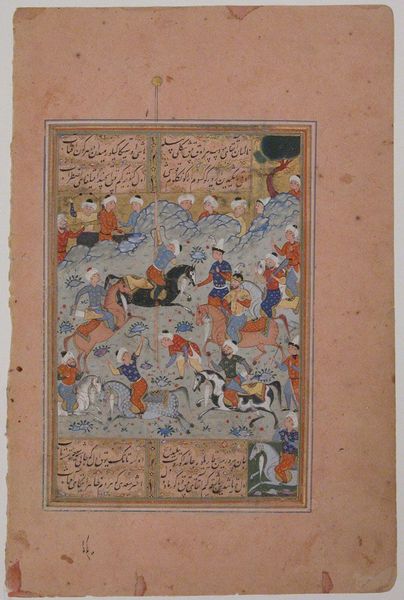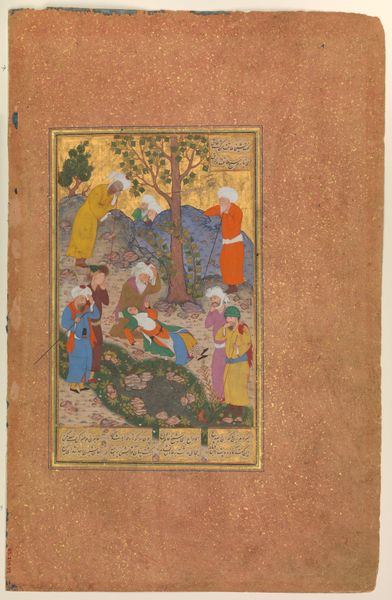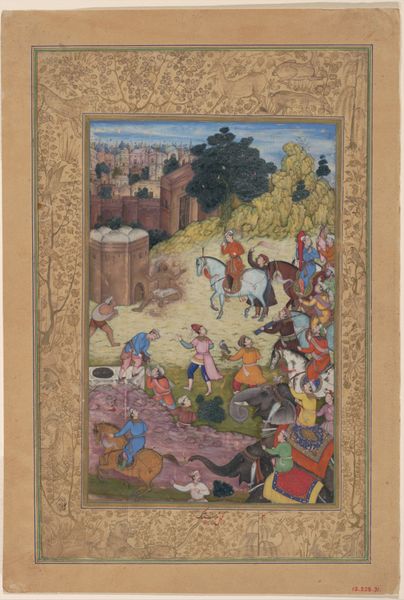
"Battle between Alexander and Darius", Folio 279 from a Khamsa (Quintet) of Nizami of Ganja 1500 - 1550
0:00
0:00
#
aged paper
#
toned paper
#
water colours
#
handmade artwork painting
#
tile art
#
coloured pencil
#
horse
#
men
#
islamic-art
#
watercolour bleed
#
watercolour illustration
#
mixed media
#
watercolor
Dimensions: Painting: H. 7 3/8 in. (18.7 cm) W. 4 13/16 in. (12.2 cm) Page: H. 12 5/8 in. (32.1 cm) W. 8 3/4 in. (22.2 cm) Mat: H. 19 1/4 in. (48.9 cm) W. 14 1/4 in. (36.2 cm)
Copyright: Public Domain
Curator: Let's discuss "Battle between Alexander and Darius," a folio from a Khamsa of Nizami of Ganja, created sometime between 1500 and 1550. Editor: Immediately, the energy jumps out at me. So much detail packed into this small space—a swirling chaos rendered in vivid colours. The horse tack, the gold leaf border—I’m interested in the craftsmanship, what materials were used and how. Curator: Crafted with watercolour and ink on paper, it's held in the collection of the Metropolitan Museum of Art. Consider, though, how this piece engages with constructions of power. We see Alexander, a figure revered and mythologized across cultures, locked in combat with Darius, a representation of a declining Persian empire. It reflects historical tensions and shifting cultural identities of the time. Editor: I am fascinated by how those cultural narratives become manifest in the actual layering of paint, in the mixing of pigments. The ground appears to be made of watercolour washes, giving the chaos a sense of materiality. Where did Nizami's workshop source these colors? What would that tell us about global trade? Curator: The dense composition emphasizes hierarchy and social order. Note Alexander's elevated position; consider his role as not just a military leader, but also a figure of intellectual aspiration within Persian literary traditions. What do we see of class structures, gender roles, and religious dynamics reflected? Editor: What I am considering are the physical conditions this painting might have been subject to, in the hands of diverse owners across generations. It is so vibrant, were these dyes derived from plants or minerals? Curator: Right. We can appreciate it from both material and sociohistorical vantage points, how form and content intersect. We began by reflecting on craftsmanship and the experience of this miniature, its vibrancy. Editor: Which made me appreciate it through the labour invested and global networks embedded in creating such luxury art.
Comments
No comments
Be the first to comment and join the conversation on the ultimate creative platform.
